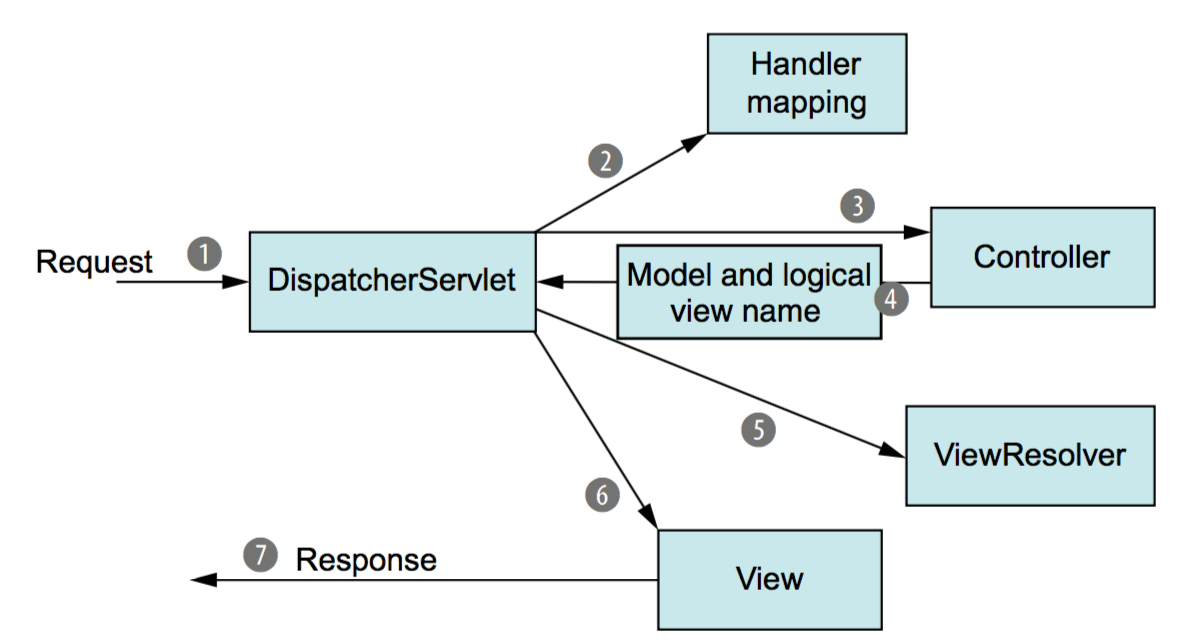(源码分析)StringBuilder源码分析
目录
- 成员变量
- 构造方法
- StringBuilder():无参构造
- StringBuilder(int capacity):指定初始化容量
- StringBuilder(String str):字符串转换成StringBuilder
- 成员方法
- append方法
- append(int i)
- append(long lng)
- append(char c)
- append(boolean b)
- append(float f)
- append(double d)
- append(String str)
- append(Object obj)
- append(StringBuffer sb)
- append(CharSequence s)
- append(char[] str)
- insert方法
- insert(int offset, Object obj)
- insert(int offset, String str)
- insert(int offset, boolean b)
- insert(int offset, char c)
- insert(int offset, int i)
- insert(int offset, long l)
- insert(int offset, float f)
- insert(int offset, double d)
- insert(int offset, char[] str)
- delete方法
- deleteCharAt(int index)
- delete(int start, int end)
- indexOf方法
- indexOf(String str, int fromIndex)
- indexOf(String str)
- lastIndexOf方法
- lastIndexOf(String str)
- lastIndexOf(String str, int fromIndex)
- 其他方法
- toString()
- replace(int start, int end, String str)
- reverse()
- 总结
说明:当前StringBuilder的版本为JDK1.8.0_144
成员变量
char[] value; // 在StringBuilder中字符串都是以字符数组的形式存储int count; // 在value字符数组中实际存储的大小,初始化为0private static final int MAX_ARRAY_SIZE = Integer.MAX_VALUE - 8; // StringBuilder所能容纳的最大的容量
构造方法
StringBuilder():无参构造
/** * 默认StringBuilder容量为16 */public StringBuilder() {super(16);}/** * 调用父类AbstractStringBuilder的带参构造方法初始化value字符串数组 */AbstractStringBuilder(int capacity) {value = new char[capacity];}
StringBuilder(int capacity):指定初始化容量
/** * 使用指定的容量初始化StringBuilder */public StringBuilder(int capacity) {super(capacity);}/** * 调用父类AbstractStringBuilder的带参构造方法初始化value字符串数组 */AbstractStringBuilder(int capacity) {value = new char[capacity];}
StringBuilder(String str):字符串转换成StringBuilder
/** * 指定字符串转换成StringBuilder */public StringBuilder(String str) {super(str.length() + 16);append(str);}/** * 调用父类AbstractStringBuilder的带参构造方法初始化value字符串数组 */AbstractStringBuilder(int capacity) {value = new char[capacity];}/** * 同步方法,将字符串转换成字符数组 */@Overridepublic StringBuilder append(String str) {super.append(str);return this;}/** * 调用父类AbstractStringBuilder的同步方法,将字符串转换成字符数组 */public AbstractStringBuilder append(String str) {if (str == null) // 当字符串为null时拼接字符数组return appendNull();int len = str.length();ensureCapacityInternal(count + len); // 确保数组的容量足够,如果容量不够,将对value数组进行扩容str.getChars(0, len, value, count); // 数组复制,将str字符串从0开始复制长度为len,到value数组从0开始count += len;return this;}/** * 当字符串为null时拼接字符数组 */private AbstractStringBuilder appendNull() {int c = count;ensureCapacityInternal(c + 4);final char[] value = this.value;value[c++] = 'n';value[c++] = 'u';value[c++] = 'l';value[c++] = 'l';count = c;return this;}/** * 确保数组的容量足够 */private void ensureCapacityInternal(int minimumCapacity) {if (minimumCapacity - value.length > 0) { // 当我需要的最小容量minimumCapacity>value的容量就对value字符数组进行扩容value = Arrays.copyOf(value, newCapacity(minimumCapacity)); // 先获取新的数组容量,再把老数组中的数据拷贝到新数组中}}/** * 获取新的数组容量,新建容量 = max(value.length*2+2,minimumCapacity),minimumCapacity为所需的容量 */private int newCapacity(int minCapacity) {int newCapacity = (value.length << 1) + 2;if (newCapacity - minCapacity < 0) {newCapacity = minCapacity;}return (newCapacity <= 0 || MAX_ARRAY_SIZE - newCapacity < 0)? hugeCapacity(minCapacity) : newCapacity;}/** * 确保新的容量不会超过StringBuilder所能容纳的最大容量MAX_ARRAY_SIZE */private int hugeCapacity(int minCapacity) {if (Integer.MAX_VALUE - minCapacity < 0) {throw new OutOfMemoryError();}return (minCapacity > MAX_ARRAY_SIZE) ? minCapacity : MAX_ARRAY_SIZE;}
成员方法
append方法
append方法执行原理:
1、在对字符数组进行赋值之前都会调用ensureCapacityInternal方法来确保数组容量足够,如果容量不够时,将会扩容至max(value.length*2+2,minimumCapacity),minimumCapacity为所需的容量
2、最后才对字符数组进行赋值
append方法源码:
append(int i)
/** * 拼接int型变量 */@Overridepublic StringBuilder append(int i) {super.append(i);return this;}/** * 拼接int型变量 */public AbstractStringBuilder append(int i) {if (i == Integer.MIN_VALUE) {append("-2147483648");return this;}int appendedLength = (i < 0) ? Integer.stringSize(-i) + 1: Integer.stringSize(i); // 获取拼接i需要占用的容量int spaceNeeded = count + appendedLength; // StringBuilder中总共需要占用的容量ensureCapacityInternal(spaceNeeded); // 确保数组的容量足够,如果容量不够,将对value数组进行扩容Integer.getChars(i, spaceNeeded, value); // 将需要拼接的int型变量i拼接到value数组中count = spaceNeeded;return this;}
append(long lng)
/** * 拼接long型变量 */@Overridepublic StringBuilder append(long lng) {super.append(lng);return this;}/** * 拼接long型变量 */public AbstractStringBuilder append(long l) {if (l == Long.MIN_VALUE) {append("-9223372036854775808");return this;}int appendedLength = (l < 0) ? Long.stringSize(-l) + 1: Long.stringSize(l); // 获取拼接l需要占用的容量int spaceNeeded = count + appendedLength; // StringBuilder中总共需要占用的容量ensureCapacityInternal(spaceNeeded); // 确保数组的容量足够,如果容量不够,将对value数组进行扩容Long.getChars(l, spaceNeeded, value); // 将需要拼接的long型变量l拼接到value数组中count = spaceNeeded;return this;}
append(char c)
/** * 拼接char型字符 */@Overridepublic StringBuilder append(char c) {super.append(c);return this;}/** * 拼接char型字符 */public AbstractStringBuilder append(char c) {ensureCapacityInternal(count + 1); // 确保数组的容量足够,如果容量不够,将对value数组进行扩容value[count++] = c;return this;}
append(boolean b)
/** * 拼接boolean型变量 */@Overridepublic StringBuilder append(boolean b) {super.append(b);return this;}/** * 拼接boolean型变量 */public AbstractStringBuilder append(boolean b) {if (b) {ensureCapacityInternal(count + 4); // 确保数组的容量足够,如果容量不够,将对value数组进行扩容value[count++] = 't';value[count++] = 'r';value[count++] = 'u';value[count++] = 'e';} else {ensureCapacityInternal(count + 5); // 确保数组的容量足够,如果容量不够,将对value数组进行扩容value[count++] = 'f';value[count++] = 'a';value[count++] = 'l';value[count++] = 's';value[count++] = 'e';}return this;}
append(float f)
/** * 拼接float型变量 */@Overridepublic StringBuilder append(float f) {super.append(f);return this;}/** * 拼接float型变量 */public AbstractStringBuilder append(float f) {FloatingDecimal.appendTo(f,this); // 将需要拼接的float型变量f拼接到value数组中return this;}
append(double d)
/** * 拼接double型变量 */@Overridepublic StringBuilder append(double d) {super.append(d);return this;}/** * 拼接double型变量 */public AbstractStringBuilder append(double d) {FloatingDecimal.appendTo(d,this); // 将需要拼接的double型变量d拼接到value数组中return this;}
append(String str)
/** * 拼接String型变量 */@Overridepublic StringBuilder append(String str) {super.append(str);return this;}/** * 拼接String型变量 */public AbstractStringBuilder append(String str) {if (str == null) // 当字符串为null时拼接字符数组return appendNull();int len = str.length();ensureCapacityInternal(count + len); // 确保数组的容量足够,如果容量不够,将对value数组进行扩容str.getChars(0, len, value, count); // 将需要拼接的String型变量str拼接到value数组中count += len;return this;}
append(Object obj)
/** * 拼接Object型变量 */@Overridepublic StringBuilder append(Object obj) {return append(String.valueOf(obj));}/** * 拼接String型变量 */public AbstractStringBuilder append(String str) {if (str == null) // 当字符串为null时拼接字符数组return appendNull();int len = str.length();ensureCapacityInternal(count + len); // 确保数组的容量足够,如果容量不够,将对value数组进行扩容str.getChars(0, len, value, count); // 将需要拼接的String型变量str拼接到value数组中count += len;return this;}
append(StringBuffer sb)
/** * 拼接StringBuffer型变量 */public StringBuilder append(StringBuffer sb) {super.append(sb);return this;}/** * 拼接StringBuffer型变量 */public AbstractStringBuilder append(StringBuffer sb) {if (sb == null) // 当传入的StringBuffer变量为null时拼接字符数组return appendNull();int len = sb.length();ensureCapacityInternal(count + len); // 确保数组的容量足够,如果容量不够,将对value数组进行扩容sb.getChars(0, len, value, count); // 将需要拼接的StringBuffer型变量str拼接到value数组中count += len;return this;}
append(CharSequence s)
/** * 拼接CharSequence型变量 */@Overridepublic StringBuilder append(CharSequence s) {super.append(s);return this;}/** * 拼接CharSequence型变量 */@Overridepublic AbstractStringBuilder append(CharSequence s) {if (s == null)return appendNull();if (s instanceof String) // 判断s是啥类型return this.append((String)s);if (s instanceof AbstractStringBuilder)return this.append((AbstractStringBuilder)s);return this.append(s, 0, s.length());}
append(char[] str)
/** * 拼接字符数组 */@Overridepublic StringBuilder append(CharSequence s, int start, int end) {super.append(s, start, end);return this;}/** * 拼接字符数组 */public AbstractStringBuilder append(char[] str) {int len = str.length;ensureCapacityInternal(count + len); // 确保数组的容量足够,如果容量不够,将对value数组进行扩容System.arraycopy(str, 0, value, count, len); // 将需要拼接的字符数组拼接到value数组中count += len;return this;}
insert方法
insert方法执行原理:
1、在对字符数组进行插入操作之前都会调用ensureCapacityInternal来确保数组容量足够,如果容量不够时,将会扩容至max(value.length*2+2,minimumCapacity),minimumCapacity为所需的容量
2、将指定插入的字符向后移动len(需要插入的字符长度)个位置
3、最后对字符数组指定插入的位置上进行赋值
insert方法源码:
insert(int offset, Object obj)
/** * 在offset处插入obj */@Overridepublic StringBuilder insert(int offset, Object obj) {super.insert(offset, obj);return this;}/** * 将obj转换成String类型,在offset处插入 */public AbstractStringBuilder insert(int offset, Object obj) {return insert(offset, String.valueOf(obj));}/** * 在offset处插入obj */public AbstractStringBuilder insert(int offset, String str) {if ((offset < 0) || (offset > length()))throw new StringIndexOutOfBoundsException(offset);if (str == null)str = "null";int len = str.length();ensureCapacityInternal(count + len); // 确保数组的容量足够,如果容量不够,将对value数组进行扩容System.arraycopy(value, offset, value, offset + len, count - offset); // 将value数组offset处到结尾的字符全部向后移动len个位置str.getChars(value, offset); // 在value数组offset处插入strcount += len;return this;}
insert(int offset, String str)
/** * 在offset处插入str */@Overridepublic StringBuilder insert(int offset, String str) {super.insert(offset, str);return this;}/** * 在offset处插入str */public AbstractStringBuilder insert(int offset, String str) {if ((offset < 0) || (offset > length()))throw new StringIndexOutOfBoundsException(offset);if (str == null)str = "null";int len = str.length();ensureCapacityInternal(count + len); // 确保数组的容量足够,如果容量不够,将对value数组进行扩容System.arraycopy(value, offset, value, offset + len, count - offset); // 将value数组offset处到结尾的字符全部向后移动len个位置str.getChars(value, offset); // 在value数组offset处插入strcount += len;return this;}
insert(int offset, boolean b)
/** * 在offset处插入b */@Overridepublic StringBuilder insert(int offset, boolean b) {super.insert(offset, b);return this;}/** * 在offset处插入将b转换成字符串后的字符串 */public AbstractStringBuilder insert(int offset, boolean b) {return insert(offset, String.valueOf(b));}/** * 在offset处插入str */public AbstractStringBuilder insert(int offset, String str) {if ((offset < 0) || (offset > length()))throw new StringIndexOutOfBoundsException(offset);if (str == null)str = "null";int len = str.length();ensureCapacityInternal(count + len); // 确保数组的容量足够,如果容量不够,将对value数组进行扩容System.arraycopy(value, offset, value, offset + len, count - offset); // 将value数组offset处到结尾的字符全部向后移动len个位置str.getChars(value, offset); // 在value数组offset处插入strcount += len;return this;}
insert(int offset, char c)
/** * 在offset处插入c */@Overridepublic StringBuilder insert(int offset, char c) {super.insert(offset, c);return this;}/** * 在offset处插入c */public AbstractStringBuilder insert(int offset, char c) {ensureCapacityInternal(count + 1); // 确保数组的容量足够,如果容量不够,将对value数组进行扩容System.arraycopy(value, offset, value, offset + 1, count - offset); // 将value数组offset处到结尾的字符全部向后移动len个位置value[offset] = c; // 在value数组offset处插入strcount += 1;return this;}
insert(int offset, int i)
/** * 在offset处插入i */@Overridepublic StringBuilder insert(int offset, int i) {super.insert(offset, i);return this;}/** * 在offset处插入i */public AbstractStringBuilder insert(int offset, int i) {return insert(offset, String.valueOf(i));}/** * 在offset处插入str */public AbstractStringBuilder insert(int offset, String str) {if ((offset < 0) || (offset > length()))throw new StringIndexOutOfBoundsException(offset);if (str == null)str = "null";int len = str.length();ensureCapacityInternal(count + len); // 确保数组的容量足够,如果容量不够,将对value数组进行扩容System.arraycopy(value, offset, value, offset + len, count - offset); // 将value数组offset处到结尾的字符全部向后移动len个位置str.getChars(value, offset); // 在value数组offset处插入strcount += len;return this;}
insert(int offset, long l)
/** * 在offset处插入l */@Overridepublic StringBuilder insert(int offset, long l) {super.insert(offset, l);return this;}/** * 在offset处插入l */public AbstractStringBuilder insert(int offset, long l) {return insert(offset, String.valueOf(l));}/** * 在offset处插入str */public AbstractStringBuilder insert(int offset, String str) {if ((offset < 0) || (offset > length()))throw new StringIndexOutOfBoundsException(offset);if (str == null)str = "null";int len = str.length();ensureCapacityInternal(count + len); // 确保数组的容量足够,如果容量不够,将对value数组进行扩容System.arraycopy(value, offset, value, offset + len, count - offset); // 将value数组offset处到结尾的字符全部向后移动len个位置str.getChars(value, offset); // 在value数组offset处插入strcount += len;return this;}
insert(int offset, float f)
/** * 在offset处插入f */@Overridepublic StringBuilder insert(int offset, float f) {super.insert(offset, f);return this;}/** * 在offset处插入f */public AbstractStringBuilder insert(int offset, float f) {return insert(offset, String.valueOf(f));}/** * 在offset处插入str */public AbstractStringBuilder insert(int offset, String str) {if ((offset < 0) || (offset > length()))throw new StringIndexOutOfBoundsException(offset);if (str == null)str = "null";int len = str.length();ensureCapacityInternal(count + len); // 确保数组的容量足够,如果容量不够,将对value数组进行扩容System.arraycopy(value, offset, value, offset + len, count - offset); // 将value数组offset处到结尾的字符全部向后移动len个位置str.getChars(value, offset); // 在value数组offset处插入strcount += len;return this;}
insert(int offset, double d)
/** * 在offset处插入d */@Overridepublic StringBuilder insert(int offset, double d) {super.insert(offset, d);return this;}/** * 在offset处插入d */public AbstractStringBuilder insert(int offset, double d) {return insert(offset, String.valueOf(d));}/** * 在offset处插入str */public AbstractStringBuilder insert(int offset, String str) {if ((offset < 0) || (offset > length()))throw new StringIndexOutOfBoundsException(offset);if (str == null)str = "null";int len = str.length();ensureCapacityInternal(count + len); // 确保数组的容量足够,如果容量不够,将对value数组进行扩容System.arraycopy(value, offset, value, offset + len, count - offset); // 将value数组offset处到结尾的字符全部向后移动len个位置str.getChars(value, offset); // 在value数组offset处插入strcount += len;return this;}
insert(int offset, char[] str)
/** * 在offset处插入str */@Overridepublic StringBuilder insert(int offset, char[] str) {super.insert(offset, str);return this;}/** * 在offset处插入str */public AbstractStringBuilder insert(int offset, char[] str) {if ((offset < 0) || (offset > length()))throw new StringIndexOutOfBoundsException(offset);int len = str.length;ensureCapacityInternal(count + len); // 确保数组的容量足够,如果容量不够,将对value数组进行扩容System.arraycopy(value, offset, value, offset + len, count - offset); // 将value数组offset处到结尾的字符全部向后移动len个位置System.arraycopy(str, 0, value, offset, len); // 将str拷贝到value数组中,从offset开始插入count += len;return this;}
delete方法
delete方法执行原理:
1、将需要删除地方后面的元素往前移
2、count减去删除的字符长度
delete方法源码:
deleteCharAt(int index)
/** * 根据索引删除字符元素 */@Overridepublic StringBuilder deleteCharAt(int index) {super.deleteCharAt(index);return this;}/** * 根据索引删除字符元素 */public AbstractStringBuilder deleteCharAt(int index) {if ((index < 0) || (index >= count))throw new StringIndexOutOfBoundsException(index);System.arraycopy(value, index+1, value, index, count-index-1);count--;return this;}
delete(int start, int end)
/** * 删除指定索引范围的字符元素 */@Overridepublic StringBuilder delete(int start, int end) {super.delete(start, end);return this;}/** * 删除指定索引范围的字符元素 */public AbstractStringBuilder delete(int start, int end) {if (start < 0)throw new StringIndexOutOfBoundsException(start);if (end > count)end = count;if (start > end)throw new StringIndexOutOfBoundsException();int len = end - start;if (len > 0) {System.arraycopy(value, start+len, value, start, count-end); // 从end到count-end的元素往前移动len个位置,相当于删除start与end之间的字符元素count -= len;}return this;}
indexOf方法
indexOf方法执行原理:
1、调用String中的indexOf方法来查找指定位置开始第一次出现指定字符串的索引
indexOf方法源码:
indexOf(String str, int fromIndex)
/** * 调用父类AbstractStringBuilder实现的 */@Overridepublic int indexOf(String str) {return super.indexOf(str);}/** * 返回索引在这个字符串的第一次出现的指定子字符串,从指定的索引开始 */public int indexOf(String str, int fromIndex) {return String.indexOf(value, 0, count, str, fromIndex);}
indexOf(String str)
/** * 调用父类AbstractStringBuilder实现的 */@Overridepublic int indexOf(String str) {return super.indexOf(str);}/** * 返回索引在这个字符串的第一次出现的指定子字符串 */public int indexOf(String str) {return indexOf(str, 0);}
lastIndexOf方法
lastIndexOf方法执行原理:
1、调用String中的lastIndexOf方法来查找指定位置开始最后一次出现指定字符串的索引
lastIndexOf方法源码:
lastIndexOf(String str)
/** * 调用父类AbstractStringBuilder实现的 */@Overridepublic int lastIndexOf(String str) {return super.lastIndexOf(str);}/** * 返回索引在这个字符串的最后一次出现的指定子字符串 */public int lastIndexOf(String str) {return lastIndexOf(str, count);}
lastIndexOf(String str, int fromIndex)
/** * 调用父类AbstractStringBuilder实现的 */@Overridepublic int lastIndexOf(String str) {return lastIndexOf(str, count);}/** * 返回索引在这个字符串的最后一次出现的指定子字符串,从指定的索引开始 */public int lastIndexOf(String str, int fromIndex) {return String.lastIndexOf(value, 0, count, str, fromIndex);}
其他方法
toString()
toString()执行原理:
1、使用String构造方法创建一个String对象返回
toString()源码:
/** * 使用String构造方法创建一个String对象返回 */@Overridepublic String toString() {return new String(value, 0, count);}
replace(int start, int end, String str)
replace(int start, int end, String str)执行原理:
1、在对字符数组进行插入操作之前都会调用ensureCapacityInternal来确保数组容量足够,如果容量不够时,将会扩容至max(value.length*2+2,minimumCapacity),minimumCapacity为所需的容量
2、将指定位置替换后面的字符元素往右移动
3、在value数组start处插入str
replace(int start, int end, String str)源码:
/** * 用指定的String中的字符替换此序列的子字符串中的String */@Overridepublic StringBuilder replace(int start, int end, String str) {super.replace(start, end, str);return this;}/** * 用指定的String中的字符替换此序列的子字符串中的String */public AbstractStringBuilder replace(int start, int end, String str) {if (start < 0)throw new StringIndexOutOfBoundsException(start);if (start > count)throw new StringIndexOutOfBoundsException("start > length()");if (start > end)throw new StringIndexOutOfBoundsException("start > end");if (end > count)end = count;int len = str.length();int newCount = count + len - (end - start);ensureCapacityInternal(newCount); // 确保数组的容量足够,如果容量不够,将对value数组进行扩容System.arraycopy(value, end, value, start + len, count - end); // 将指定位置替换后面的字符元素往右移动str.getChars(value, start); // 在value数组start处插入strcount = newCount;return this;}
reverse()
reverse()执行原理:
1、在for循环中反转字符数组中的元素
reverse()源码:
/** * 反转字符串 */@Overridepublic StringBuilder reverse() {super.reverse();return this;}/** * 反转字符串 */public AbstractStringBuilder reverse() {boolean hasSurrogates = false;int n = count - 1;for (int j = (n-1) >> 1; j >= 0; j--) {int k = n - j;char cj = value[j];char ck = value[k];value[j] = ck;value[k] = cj;if (Character.isSurrogate(cj) ||Character.isSurrogate(ck)) {hasSurrogates = true;}}if (hasSurrogates) {reverseAllValidSurrogatePairs();}return this;}private void reverseAllValidSurrogatePairs() {for (int i = 0; i < count - 1; i++) {char c2 = value[i];if (Character.isLowSurrogate(c2)) {char c1 = value[i + 1];if (Character.isHighSurrogate(c1)) {value[i++] = c1;value[i] = c2;}}}}
总结
- StringBuilder是一个可变的字符串,底层使用字符数组来存储数据,实际上数据都以字符的形式储存在字符数组value中
- StringBuilder默认初始化容量大小为16,在每一次进行添加操作(append、insert)时,都会调用ensureCapacityInternal方法来确保数组容量足够,如果容量不够时,将会扩容至max(value.length*2+2,minimumCapacity),minimumCapacity为所需的容量
- StringBuilder是一个线程不安全的类,所以说在性能上会比StringBuffer高,但是在多线程环境中会出现安全问题
- StringBuilder中value字符数组拷贝是通过System.arraycopy()方法来操作的



































还没有评论,来说两句吧...